Best Shoes for Orthotic Inserts – Don’t Ignore Your Children Feet or Leg Pain!
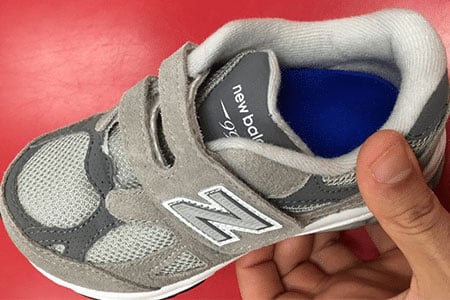
I am always emphasizing to parents how it doesn’t matter how supportive the orthotics/inserts that they get for their kids are, if they are not fitted properly inside the shoes, your kids won’t get any of the benefits that the orthotics have to offer. This resource reflects an up-to-date selection of the best shoes for orthotic inserts.
One of the most common reasons why children need to wear orthotics is from having flat feet. Other common reasons are low muscle tone, rolled ankles, knock knees, or poor posture.
If your child has been diagnosed with any of the foot conditions I mentioned and has been complaining about foot or leg pain, then the correct type of shoes and orthotics might significantly reduce or completely eliminate the pain.
There are only certain shoes that work with a pair of orthotics, and I will show you which are the best styles shortly.
What a Difference the Correct Shoes Can Make!
The orthotics and the shoes work together in preventing and treating your child’s foot conditions. This means that if you fit an orthotic inside a pair of unsupportive shoes, your child won’t get any of the benefits that the orthotics have to offer. Let me prove it to you!
Let’s take a look at a flat-footed child standing barefoot:
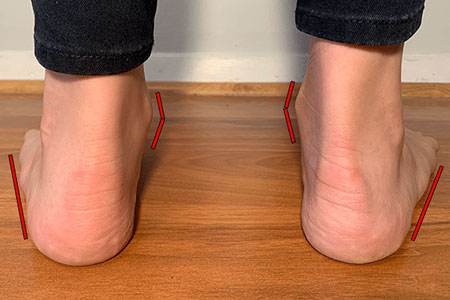
Now let’s take a look at an image of the same flat-footed child wearing a pair of unsupportive shoes with orthotics. Do you notice how the child’s feet are collapsing and turning inwards?

Now let’s take a look at an image of the same child wearing a pair of supportive shoes with orthotics. Do you notice how straighter the feet are?
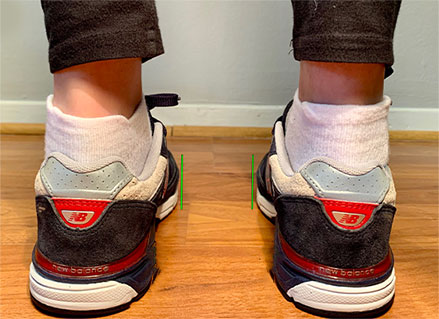
What Makes the Shoes that I Recommend Ideal for Orthotics?
The shoes that you want to look for your child must provide these three important features:
- Support
- Extra depth
- Rounder toe-boxes
Let me describe each feature individually so you know exactly what features you need to look for in your child’s shoes for them to work with an orthotic.
1️⃣ Support: The support of the shoes comes from the outsole. You must avoid shoes that provide flat outsoles. Below you can see the difference between a shoe with a substantial outsole versus a shoe with an outsole that is too thin and doesn’t provide the correct amount of support:
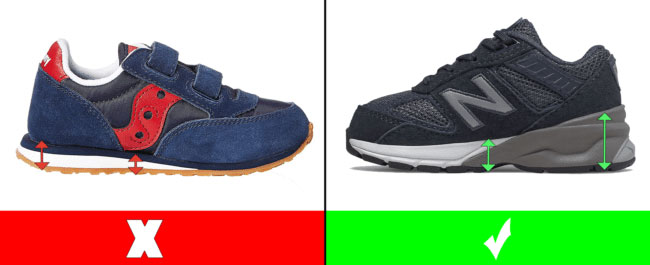
2️⃣ Extra Depth: If the orthotic doesn’t fit deep down inside the shoes, it will give your kids the impression that their feet are coming out of the shoe every time they walk. Let’s take a look at the image below showing the difference between a shoe that provides extra depth and one that doesn’t:
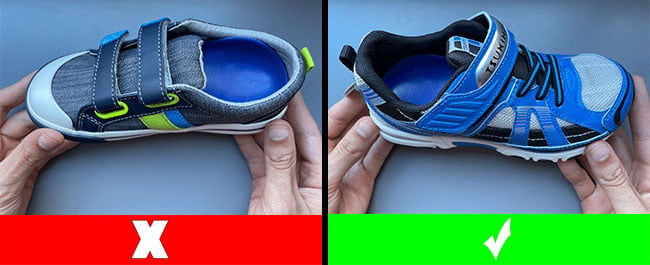
3️⃣ Rounder Toe-Boxes: Shoes with rounder toe-boxes help prevent your kids’ toes from rubbing against the side or the front of the shoes. They will also prevent the orthotics from poking a hole through the shoes. Let’s take a look at the difference between a shoe with a rounder toe-box and one with a pointier one:

If the shoes don’t come with a nice round toe-box you will notice your child complaining that the shoes are too tight, and you might notice indentations or red marks along his small toe. In addition, if the shoe is too narrow, the orthotic might end up making a hole through the shoe. Let’s take a look at an example of an orthotic in a shoe that is too narrow:
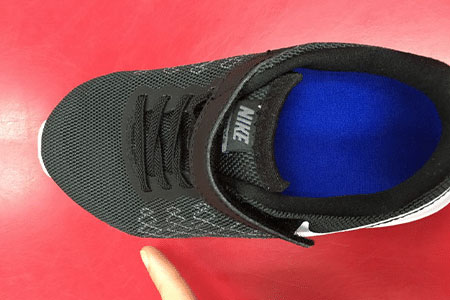
As you can see in both of these pictures the orthotic is poking out of the shoe.
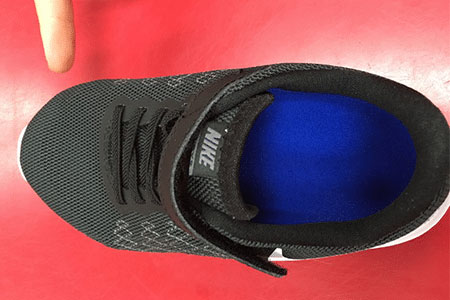
These are the 3 most important features that the shoes must provide to fit an orthotic properly.
At the kids’ shoe store that I work for, I handle approximately 100 pairs of fittings and try-ons per week. That is a lot of shoes folks! I know which are the best shoes in terms of support, structure, and durability. I also know which shoes are better suited for orthotics inserts.
Without further ado, let’s take a look at the best shoes for orthotic inserts. Disclosure: Some links in this post may be affiliate links and we may receive a small commission (at no extra cost to you) when you click our links and make purchases.
The Best Shoes for Orthotic Inserts
These shoes are available in medium (M), wide (W), and extra wide (XW) widths.
- The New Balance shoe style 990V6 is available for toddlers, little, and big kids
- Available in laces and velcro
- Fits children with medium, wide, or extra wide feet
- Suede/mesh upper provides durability and breathability
- Order this shoe half a size larger than your toddler’s current foot size
- The New Balance shoe style 990V6 is available for toddlers, little, and big kids
- Available in laces and velcro
- Fits children with medium, wide, or extra wide feet
- Synthetic/mesh upper provides durability and breathability
- Order this shoe half a size larger than your toddler’s current foot size
- The Stride Rite shoe style Elliot is available for toddlers
- Lace-up closure
- Fits toddlers with medium, wide, or extra wide feet
- 100% leather made
- Order this shoe half a size larger than your toddler’s current foot size
- The Stride Rite shoe style Emilia is available for toddlers
- Lace-up closure
- Fits toddlers with medium, wide, or extra wide feet
- 100% leather made
- Order this shoe a whole size larger than your toddler’s current foot size
- The Timberland shoe style Tracks is available for toddlers
- Double velcro straps
- Fits toddlers with medium or wide feet
- Water-friendly
- Order this shoe a whole size larger than your toddler’s current foot size
- The New Balance shoe style 574 is available for toddlers
- Available in velcro and laces
- Fits children with medium, wide, or extra wide feet
- Synthetic/mesh upper provides durability and breathability
- Order this shoe a whole size larger than your toddler’s current foot size
- The New Balance shoe style 990V6 is available for toddlers, little, and big kids
- Available in velcro and laces
- Fits children with medium, wide, or extra wide feet
- Synthetic/mesh upper provides durability and breathability
- Order this shoe a half size larger than your toddler’s current foot size
- The Memo shoe style Gabi is available for toddlers and little kids
- Double velcro straps
- Fits children with medium or wide feet
- Genuine leather and breathable mesh
- Thermoplastic asymmetric stiff heel counter for proper feet protection and stabilization
- Order this shoe half a size larger than your toddler’s current foot size
- The Memo shoe style Gabi is available for toddlers and little kids
- Double velcro straps
- Fits children with medium or wide feet
- Genuine leather and breathable mesh
- Thermoplastic asymmetric stiff heel counter for proper feet protection and stabilization
- Order this shoe half a size larger than your toddler’s current foot size
- The Saucony shoe style Cohesion is available for toddlers
- Velcro closure
- Fits toddlers with medium or wide feet
- Heel grid system for stable cushioning
- Compression molded EVA footbed for comfort
- Order this shoe a whole size larger than your toddler’s current foot size
- The Saucony shoe style Cohesion is available for toddlers
- Velcro closure
- Fits toddlers with medium or wide feet
- Heel grid system for stable cushioning
- Compression molded EVA footbed for comfort
- Order this shoe a whole size larger than your toddler’s current foot size
- The Timberland shoe style Bootie fits toddlers and little kids
- Double velcro straps
- Fits children with medium or wide feet
- Padded collar for a comfortable fit around the ankle
- Water-friendly
- Order this shoe a whole size larger than your toddler’s current foot size
- The Memo shoe style Princessa fits toddlers and little kids
- Double velcro straps
- Fits children with medium or wide feet
- This is an ORTHOPEDIC shoe
- Rigid heel counter
- Order this shoe half a size larger than your toddler’s current foot size
- The Saucony shoe style Cohesion 14 is available for little and big kids
- Velcro closure
- Fits children with medium and wide feet
- Heel grid system for stable cushioning
- Compression molded EVA footbed for comfort
- Order this shoe a half size larger than your child’s current foot size
- The Saucony shoe style Cohesion 14 is available for little and big kids
- Velcro closure
- Fits children with medium and wide feet
- Synthetic and mesh upper
- Heel grid system for stable cushioning
- Order this shoe half a size larger than your child’s current foot size
- The New Balance shoe style DynaSoft v5 is available for little and big kids
- Fits children with medium or wide feet
- Velcro closure
- ABZORB midsole absorbs impact through a combination of cushioning and compression resistance
- Mesh upper material features no-sew overlays for a sleek fit and feel
- Order this shoe half a size larger than your child’s current foot size
- The New Balance shoe style 2002 is available for toddlers and little kids
- Available in laces
- Fits children with medium and wide feet
- Suede/mesh upper provides durability and breathability
- Order this shoe half a size larger than your toddler’s current foot size
- The New Balance shoe style 2002 is available for toddlers and little kids
- Available in laces
- Fits children with medium and wide feet
- Suede/mesh upper provides durability and breathability
- Order this shoe half a size larger than your toddler’s current foot size
- The New Balance shoe style DynaSoft v5 is available for little and big kids
- Fits children with medium or wide feet
- Velcro closure
- Synthetic and engineered mesh upper
- Fresh Foam midsole cushioning is precision engineered to deliver an ultra-cushioned, lightweight ride
- Order this shoe a half size larger than your child’s current foot size
- The Memo shoe style Polo is available for little and big kids
- Triple velcro straps
- Fits children with medium or wide feet
- This is an orthopedic shoe
- Thermoplastic rigid heel counter
- Order this shoe a half size larger than your child’s current foot size
- The Memo shoe style Chicago is available for little and big kids
- Triple velcro straps
- Fits children with medium or wide feet
- This is an orthopedic shoe
- Thermoplastic rigid heel counter
- Order this shoe a half size larger than your child’s current foot size
- The New Balance shoe style Coco is available for little and big kids
- Lace-up closure
- Fits children with medium or wide feet
- NDurance rubber outsole technology provides superior durability in high-wear areas to help get more out of the shoes
- Order this shoe a half size larger than your child’s current foot size
- The Adidas shoe style Own the Game 2.0 is available for little and big kids
- Lace-up closure
- Fits children with medium or wide feet
- Supportive outsoles and firm heel counter
- Order this shoe a half size larger than your child’s current foot size
- The Adidas shoe style Cross Em Up Select is available for little kids
- Lace-up closure
- Fits children with medium or wide feet
- Non-marking outsole
- Order this shoe a whole larger than your child’s current foot size
- The Saucony shoe style Kinvara LTT is available for little and big kids
- Lace-up closure
- Fits children with medium or wide feet
- Cushioned footbed
- Order this shoe a whole size larger than your child’s current foot size
- The Saucony shoe style Kinvara LTT is available for little and big kids
- Lace-up closure
- Fits children with medium or wide feet
- Cushioned footbed
- Order this shoe half a size larger than your child’s current foot size
- The Saucony shoe style Cohesion 14 LTT is available for little and big kids
- Lace-up closure
- Fits children with medium or wide feet
- Supportive leather and mesh upper for breathability and durability
- Order this shoe a whole size larger than your child’s current foot size
- The New Balance shoe style FuelCell Rebel v3 is available for big kids
- Lace-up closure
- Fits children with medium or wide feet
- ENCAP midsole cushioning provides good arch and heel support
- Order this shoe half a size larger than your child’s current foot size
- The New Balance shoe style 327 is available for little and big kids
- Lace-up closure
- Fits children with medium or wide feet
- Suede and mesh upper
- Order this shoe a whole size larger than your child’s current foot size
- The New Balance shoe style 527 is available for little and big kids
- Lace-up closure
- Fits children with medium or wide feet
- Suede and mesh upper
- Order this shoe half a size larger than your child’s current foot size
- The New Balance shoe style 527 is available for little and big kids
- Lace-up closure
- Fits children with medium or wide feet
- Suede and mesh upper
- Order this shoe half a size larger than your child’s current foot size
Get a Personalized Suggestion
If none of these shoes are available in your child’s shoe size or if you need the shoes to be made of a specific color don’t hesitate to email me at:
Shoes with shoelaces provide more benefits than shoes with velcro straps. Shoelaces provide better stability and support, and allow your child to completely secure the heel area of the shoe.
One of the main issues children have with wearing orthotics is the extra space that is found around their heels, since the orthotic is eventually raising their feet. I created a different article where I explain the most effective way to tie shoes with orthotics.
Most Common Reasons Why Children Need to Wear Orthotics
Let’s take a look at the most common causes of why children wear orthotics:
1️⃣ Pronation: this occurs when the arch collapses and the foot rolls inward excessively.
2️⃣ Supination: this occurs when the foot leans to the outside.
3️⃣ Sensory and stability issues: these occur among children who have low-muscle tone, tight cords, or severe toe-in.
4️⃣ Foot pain: this occurs among children that might be experiencing cramping in the foot, leg, and knee.
5️⃣ Feet and legs feeling tired: this occurs among children who are involved in physical activities.
All of these causes are believed to be hereditary.
Don’t panic! It’s common, and there are things you can do to help your child walk and run straight, and prevent bigger issues down the road such as back pain.
Our Kids’ Feet Act as Shock Absorbers – Sometimes they Need Help!
Our feet are our body’s first shock absorbers since they help the body by absorbing impact and responding to uneven surfaces. When we are pronating or supinating excessively, the body’s natural shock-absorbing capability reduces considerably.
Providing children with good supportive shoes and orthotics helps them minimize the impact that their feet and legs take every time they impact against the ground!
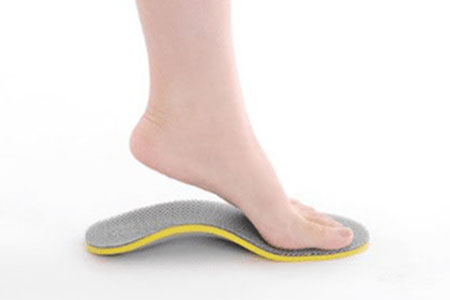
What Are the Benefits of Wearing an Orthotic?
- They provide biomechanical balance by redistributing body weight.
- They not only improve and correct your child’s foot position, but they also affect the alignment of the ankles, knees, hips, and the low back, because everything is connected in a biomechanical chain.
- They provide cushioning, support, stability, and/or relief to pressure areas of the foot.
- They provide relief to those muscles that are overworking.
- They help absorb the shock of each step that your child takes rather than passing on these shocks to the leg and spine.
I want to clarify that orthotics won’t help your child develop an arch. It will provide all the benefits previously mentioned and most importantly, reduce or eliminate the foot and leg pain that your child has been experiencing.
Some parents also come to the store saying that they took their child to their pediatrician and even though the child showed clear signs of overpronation and flat feet, the pediatrician told them that the child was fine and was going to outgrow the issue.
I always recommend parents to be proactive and don’t take the “wait and see approach” when it comes to treating their children’s foot conditions.
Did you know that with early intervention orthotics can be a short-term solution to your children’s foot problems?
What Are the Best Orthotics for Kids with Foot and Leg Pain?
If you don’t have an orthotic for your child or are unsure whether the orthotic you got is suitable for your child’s needs, there is a certain type of orthotic that is easier to fit than most and provides excellent arch and heel support.
The main reason why I recommend this orthotic is that it provides excellent arch and heel support, and at the same time is not as invasive as other orthotics. This means that this orthotic allows the child’s foot and leg muscles to develop on their own while supporting them.
Fits Toddler Shoe Size 5 up to Big Kid Shoe Size 3
- Fits a toddler shoe size 5 up to a big kid shoe size 3
- Medically approved insoles with targeted cushion and support
- Deep heel cup with strong arch support
- Made from lightweight yet supportive cushioning material with shock-absorbing heel and forefoot padding
- They can be trimmed to size with scissors if needed
This orthotic is ideal for children with mild cases of pronation. Here is another article in case your child happens to have moderate or strong pronation.
Have you found a particular shoe style that works better with orthotics? Is there a particular type of orthotic/insert that you recommend for kids? Please share your feedback in the comments section below so we can all benefit from your experiences.

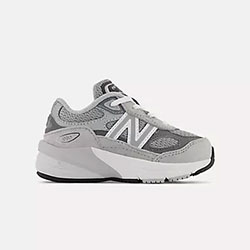
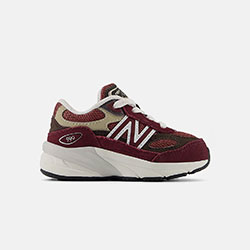
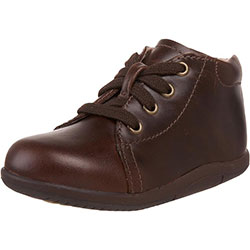

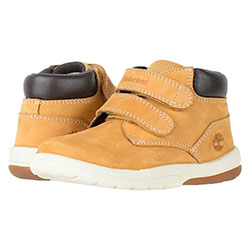
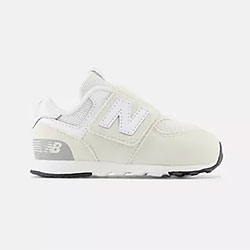
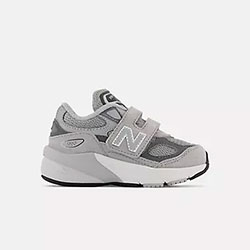

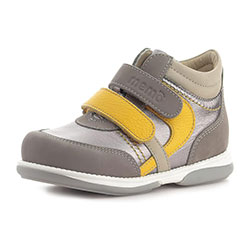

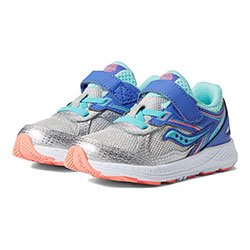
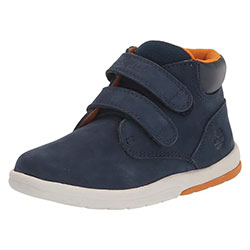
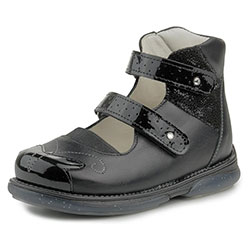
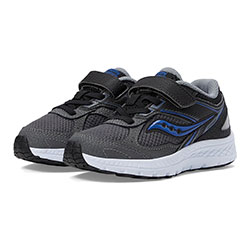
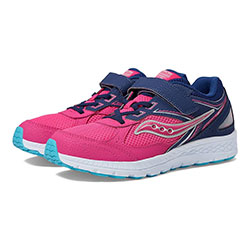

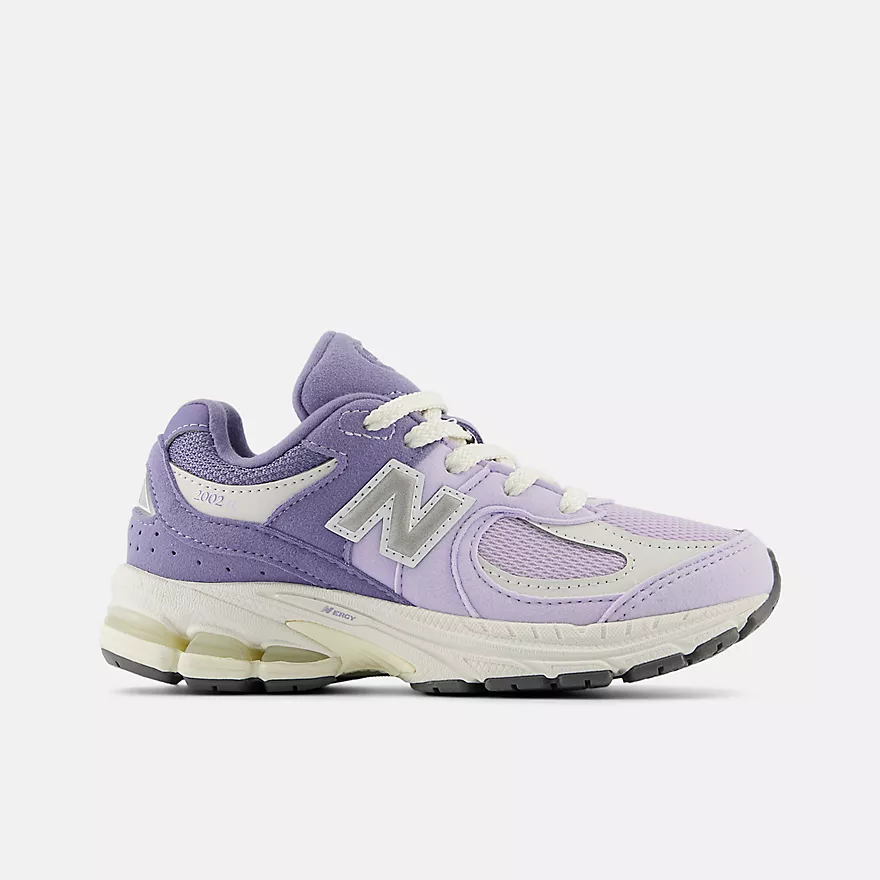
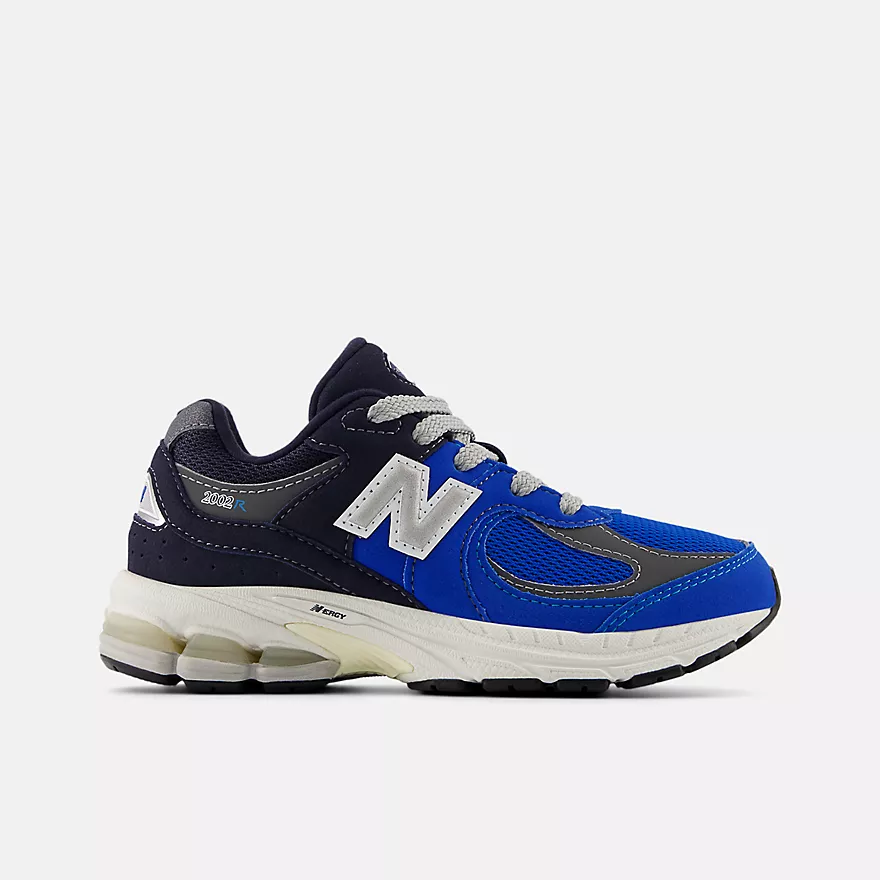
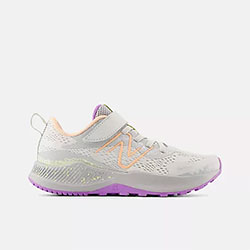
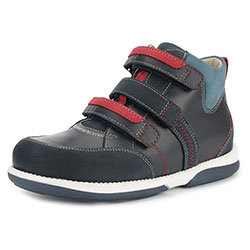
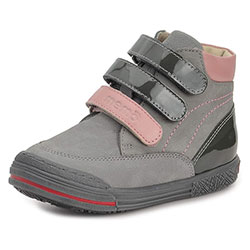
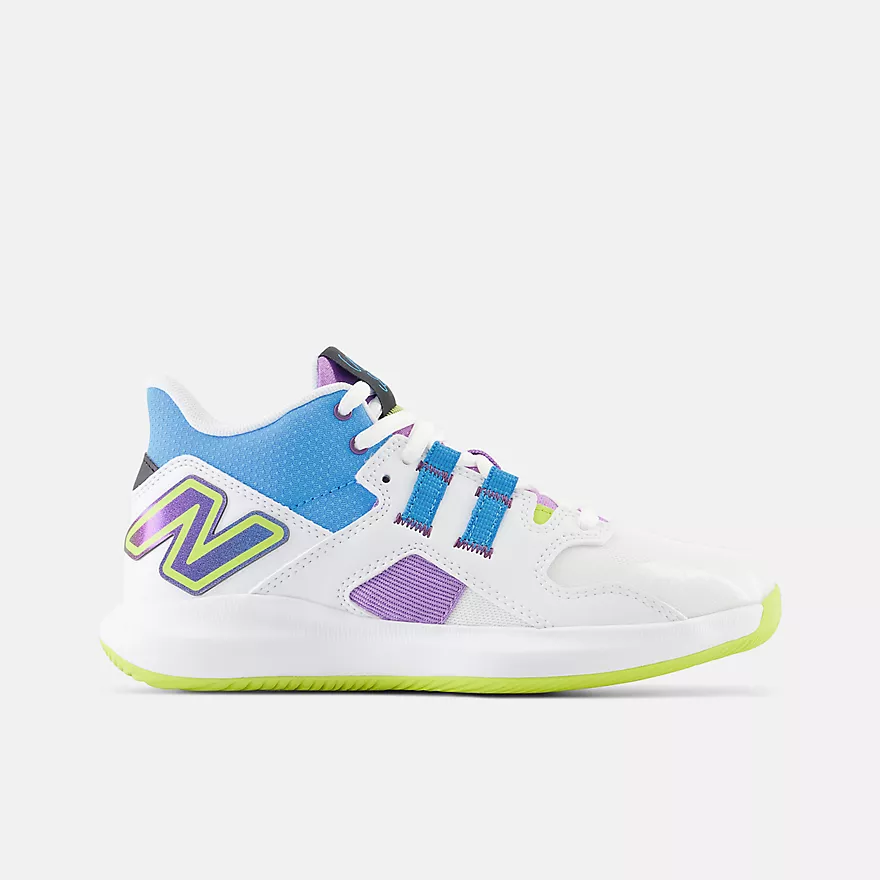
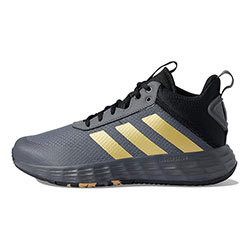
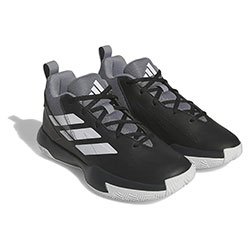

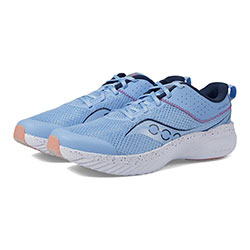
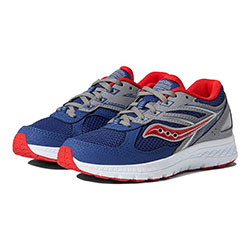
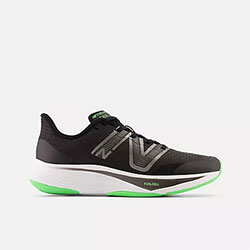


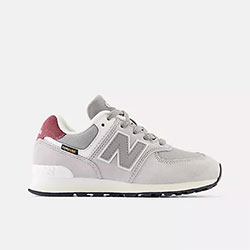



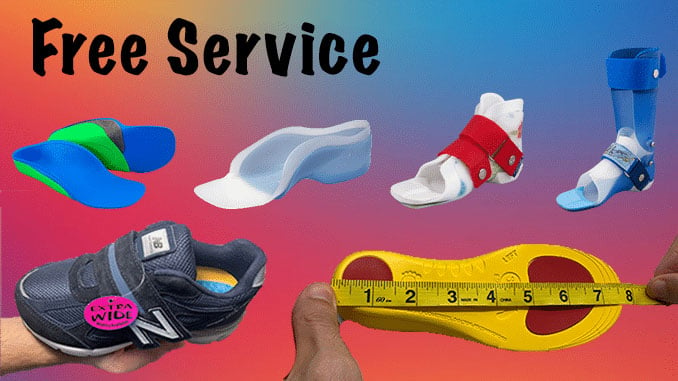
Hi Juan,
My children have been wearing the New Balance PO888v2 thanks to your website and they have been fantastic. Best shoes I have ever bought them.
My podiatrist in Australia is also very impressed with them. However I just went to purchase the next size for my kids (1 who wears orthotics) and it seems like they do not make these anymore. What would be the second best option behind the 888? I preferably would like them to be deep enough for orthotics but also have the velcro option for my other children too.
Thanks,Kristina
Hello Kristina,
Check if you are able to order the New Balance 990V5, that will be the most similar style to the 888V2. It’s available with shoelaces or velcro closure.
What do u recommend for winter boots for toddler age 4 in size 11boots
Hello Kelly,
It depends on your toddler’s foot shape. Do you know if your child has narrow, medium, wide, or extra wide feet? Are you looking for a snow boot or an insulated hiking boot?
Have been Looking for the best Arch support and cushioning in a pair of shoes for a while now, for my God Child Katelyn. It has been a real task. This article really helped me find some of the best shoes for kids. Keep writing guys. Well done…Looking forward to more articles like these.
I am glad that you found the article informative.
You are brilliant. These are all the things I look for in a shoe for my 3 year old who wears orthotics. Thank you!
Hi Kara –
Seems like you are all set! Please let me know if any questions come up!
Hi
Thank you so much for sharing this. It’s exactly what I’ve been looking for.
My pleasure! Please let me know if you have any questions.
My child has flat feet and is active in sports. Any idea about how I can find soccer, etc cleats that will fit an orthotic or already has great built in support for his feet? His ankles roll inward in the cleats he has now.
Hello Jess,
You need to provide your child with a pair of cleats that come with a firm heel counter. There are definitely certain soccer shoe styles that can accommodate an orthotic but before trying an orthotic inside your child’s soccer shoes, I recommend to first try a heel cup.
Here are the cleats that I recommend:
Soccer Cleat with Firm Heel Counter: Option 1
Soccer Cleat with Firm Heel Counter: Option 2
Here is the most effective heel cup that I have fitted before:
Heel Cups for Kids with Heel Pain and Ankle Rolling
If you want to fit a pair of insoles inside your child’s soccer cleats,there is one style that is specifically designed to work with sport shoes:
Insole for Rolled Ankles
I hope this helps!
Thank you so much! I’m purchasing now! Is this info the same for baseball and football cleats also?
Hello Jess,
The insole will work in your kids’ baseball and football cleats as well. Please don’t forget to remove the original sole of the shoes before placing the Superfeet insole.
TYSM!
Hi Juan, will these orthotics help with in-toeing? I’ve just discovered that swapping my daughter’s shoes, left for right, helps her feet to straighten out! But there must be a better way…
Hello Renee,
That method was used in the past, and while it might have been somewhat effective, nowadays there are certain shoes and orthotic styles that are specifically designed to help treat and correct child’s foot conditions, including in-toeing. Yes, the orthotic that I recommend in this article will help straighten your child’s feet, as long as it’s worn in the correct pair of shoes.
Hi Juan,
Thank you very much for your very helpful article. My 8 years old daughter has pronation and advised to wear insoles. As summer is approaching, we are wondering what to wear in summer? Is there any orthotic sandals to recommend for overpronation? Moreover, is there any good fitting shoe stores near Boston area? Thank you so much!
Hello,
During the summer, when she is not wearing her sneakers with the orthotics, she needs to wear a substantial and supportive pair of sandals.
There is a particular sandal made by the shoe company Keen that is the most recommended for children with foot conditions that wear orthotics with their shoes:
Supportive Sandal for girls: Option 1
Please refer to an article I wrote where I describe the best fitting kids’ shoe stores by state:
The Best Kids’ Shoe Stores In The United States – Where To Go For Proper Fittings
I hope this helps!
Thank you so much, yes, that helps! So sorry, I meant his nikes are his current shoes (which I know won’t work), but after reading all your great info I am planning on buying new tennis shoes to fit the orthotics and that’s why I was wondering about less expensive new balance. Thank you again!
Hello Erin,
Do not hesitate to send me pictures of your son’s feet wearing the shoes if you need to double check how they are fitting him. Chipmunks tend to take a lot of space inside the shoes and they are not easy to fit. Make sure you tie the shoes properly to prevent too much heel movement.
Hi, thank you so much for such great information! Is there a less expensive new balance with laces that you recommend? Also looking for size help (we are in AZ and I didn’t see any stores listed). My son wears a Nike size US 11 (toddler) and we are looking to fit his chipmunk orthotics in his tennis shoes. I am thinking a 12 new balance and would you recommend getting wides? Thank you!
Hello Erin,
Yes, there are other shoe styles that I can recommend that will work with a pair of orthotics at a more affordable price.
Supportive Shoe for orthotics: Option 1
If you didn’t see any shoe stores listed on the map, it’s because there isn’t any or I haven’t been able to find one.
The Chipmunks won’t work with the Nike shoes, since they tend to be really shallow and unsupportive. Chipmunks take a lot of room inside the shoes, so I do recommend getting a wide width shoe. Remember to remove the inner sole of the shoes before placing the Chipmunks.
I hope this helps!
My son is 13 and very active in sports. He often has heel pain and his feet turn outward. Since his feet are growing, the podiatrist gave him off the shelf orthotics for his shoes. The few times he wore them, his knee hurt. Do you think the knee pain is related to the orthotics.
Hello Dana,
It might be, how long has he been using them? Are these the type of orthotics that he can wear in his sports shoes? Which brand are they? Please get back at me with those answers so I can help you better.
Hi Juan,
Love your site! My 4 year old has worn smo orthotics since he was 1. His PT recently decided we should try cascade’s chipmunk insoles. They have a high arch. He pronates and his ankles roll in a bit barefoot. He has low tone. PT suggested shoes woth good ankle support to wear with the in soles. Do you have any high tops to suggest? His school won’t let him wear laces yet. Also any rain boit suggestions to use with insoles?
Thanks!
Hello Piper,
Chipmunks are great, we actually carry them at the shoe store and I have seen the positive impact they have when they are fitted properly. Chipmunks take a lot of room inside the shoe, so you MUST make sure you provide your boy with a shoe that is deep enough for the Chipmunk to sit deeper inside the shoe and don’t raise his feet up. I can definitely help you find the correct type of shoes but I need to know what is his shoe size and also if you are willing to provide him with shoelaces instead of velcro (shoelaces provide more support and more stability than velcro). I know you say the school won;t allow him but they should be able to accommodate if you explain them that he needs them for his orthotics. We don’t fit orthotics inside a rain boot since he won’t get any benefits out of them. A waterproof hiking boot will be different since it provides more support than a rain boot.
Please get back at me with his shoe size so I can provide you with a better response.
Hi, thanks for your reply.
Her orthotic is a full length orthotic. It is 17cm long and at the widest point it is 16.5cm wide. She’s wears a US 9 toddlers. I am not sure what orthotic it is but I do know it is raised in the arch a lot. A lot more than most kids her age. Hope all this information helps. Looking forward to hearing your sneaker suggestions.
The shoe style below is very deep and it provides excellent arch and heel support.
New Balance Shoes for Kids Who Wear Orthotics
I hope this helps!
Hi I just wanted to thank you for your advice. We went and tried the Keen sandals on and it was the first time my daughter was so happy trying a pair of sandals on. She instantly loved them and was walking and running around the shop. I knew straight away that they must have been comfortable for her. I have also ordered her a pair of the New Balance shoes you recommended above.
I would love some advice for my youngest daughter. She is 12 months old and has taken some steps. I would love your advice on what the best first walker shoe is to buy once she begins walking. She does not show any signs of hypermobility and she plants her feet perfectly.
Thanks again.
Hello Kristina,
I am glad she likes them!
Remember that for your younger daughter we want to keep her barefoot around the house for healthy foot development. If you were thinking of taking her to the playground then that’s when a pair of shoes come into play. I actually wrote a post where I describe the best shoes for for a child that is learning how to walk and you can find it here:
The Best Shoes For Babies Learning How To Walk – Allow Them To Take Those First Step With Confidence!
Please let me know if that helps!
Hi Juan,
My daughter has been wearing her Keen sandals and her New balance KJ888. Having laces has definitely made a difference. Thank you for your advice. The strange thing my husband and I have noticed is that our daughter walks so much better in the Keen sandals. Even her physiotherapist saw her in them both and was shocked with how much better she walks and how much more stable she is especially on uneven surfaces in the Keen’s.
Why would this be? Wouldn’t she walk better in the shoes with orthotics?
Would love to hear why this could be the case. Her physio would also like to know because she could not understand it, she even called them her magic shoes.
Thanks
Kristina
Hello Kristina,
I am glad your daughter is doing so much better. I feel like it might be a matter of your daughter getting used to the shoes and the orthotics, but another reason might be that either the shoes or the orthotics are not the correct size.
Did you try watching her wearing the sneakers without the orthotics? I would be curious to see what happens, because in this particular case when it comes to support less might be better. Don’t get me wrong, we still want a good supportive shoe, but maybe that’s all she needs. It’s really hard for me to asses why your daughter is walking differently without watching her walk.
Please follow up with me and tell me how she does.
Hi Juan Pablo,
My daughter has been wearing her Keen sandals and her New Balance runner you recommend. She loves them both.
My husband and I have noticed that she walks so much better in the Keen sandals than the New Balance with her orthotics. Especially outside on uneven surfaces she looks so much better in the Keens. Our daughters physio also saw her in both shoes and was amazed how much better she walks in the Keens and she could not understand why.
Do you have any ideas why this would be the case?
Kind regards,
Kristina
Hello Kristina,
I responded to your message. If you are still concerned, you can send me a video of your daughter walking with and without the shoes, and then I can give you a better opinion. I can’t do much more without watching her walk. I would also like to see the orthotics she is wearing. Thank you.
Hi Juan,
I will send you some videos which will hopefully make it more clear. I think the reason may be that the underneath of the keen sandal sole is quite wide than any other shoe she is worn and maybe gives her more stability due to the larger surface area?
Also thank you for the advice for my youngest daughter. We got her the Stride rite soft motion pre walkers for daycare and playing outdoors. She has been walking now for 6 weeks. Just wanted to know how long should you keep them in pre walkers for and what do you recommend for her next pair of shoes.
Kind Regards,
Kristina
Kristina,
That’s a good point. However, we are guessing since it can be more than one reason and we need to find out why so your daughter can walk and run comfortably.
Is your youngest daughter stable when she walks now? Is she also running? If she is, the next pair of shoes should have a more substantial, supportive sole and a firmer heel counter.
Hi, My daughter is 3 and is hyper mobile and her feet caved inwards and when trying to walk she would walk in the insides of her feet. She now wears orthotics and is doing a lot better. She currently wears New Balance runners but we live in Australia and it is quite hot now and she really needs sandals. What are the best sandals for children with orthotics?
Thanks in advance.
Kind Regards,
Kristina
Hello Kristina,
The right type of shoes with the correct type of orthotics do have a huge positive impact in the way our children walk. I am glad she is doing so much better!
When it comes to sandals for children wit flat feet, the shoe brand Keen is the way to go. They come with a built in arch and a substantial sole. I wrote a post about the best summer sandals for kids and you can find it here:
The Best Sandals For Kids – The Most Popular And Durable Kids Summer Shoes!
Now when you get to the selection of Keens, please make sure you choose any of the styles that are named “Newport”, since these are the most supportive, durable styles made by Keen. I hope this helps!
Thank you for your reply. I really appreciate it. Are her orthotics able to go into the Keen sandals or is there enough support for her in these on the occasions she wears them?
Kind Regards,
Kristina
Hello Kristina.
No, we don’t FIT orthotics in sandals. They just don’t. You can fit orthotics in everyday sneakers, dress shoes, and boots, but NOT in sandals. The sandals I recommend don’t have the same support as an orthotic (that’s why your daughter should still alternate and wear her sneakers). However, these sandals are the MOST supportive in the market. They come with a substantial rubber sole, built in arch, and great traction. I hope this clarifies!
Thank you for clarifying that.
Which New Balance sneakers do you recommend for orthotics and toddlers with hypermobility and rolling inwards? Are the New Balance 574 good? In the laces or Velcro? My daughter has a narrow foot but has orthotics, which sneakers do you recommend?
Thanks you,
Kristina
Hello Kristina,
Personally I don’t like to use the 574 style for orthotics. It’s more of a stylish, than a functional shoe to me. Plus there are many others more substantial, supportive styles.
First of all if your daughter has narrow feet and wears orthotic, please provide her with shoes with laces. They will FIT her better (they hug the foot better), and they provide more support and stability.
Does the orthotic takes a lot of room? What type of orthotic is it? My last question is, what shoe size does she wear? If you provide me with that information I can get back at you with which styles will be better for her feet.
My daughter has flat feet and recently have been fitted with custom orthotics. The doctor stated she should wear some form of shoes with arch support even at home. We are always barefoot at home. Do you have any suggestions for slippers that we can put in the orthotics or some sort of indoor shoes with good arch support other than sneakers? Thank you!
Dear Sam,
Orthotics work best in sneakers and you can’t fit orthotics in slippers. If you are looking for a shoe that your daughter can wear inside the house without the orthotic, you must provide her with a pair of good supportive shoes. Any of the shoes I describe in this post are supportive, flexible, and lightweight. It’s important that whenever your child is not wearing the orthotic she wear a good substantial, supportive sneaker.
My grandson is autistic and toe walks, he has been fitted for braces as the muscle in his left foot had tightened to the point that he was unable to stand flat on that foot. The orthotic person recommended new balance sneakers. He measured his feet in the braces and said the size is 6.75″ long and needs wide width. Can you help me with an actual size? I need to order him sneakers ASAP. Thank you for your assistance
Susan,
6.75 inches translate to a shoe size 11. Just so you know, your grandson will get more support and more stability from a pair of shoes that have shoelaces. Also, you might need to provide your grandson with a shoe size 11 1/2 since orthotics do take extra space. The shoe I recommend in this post are all available in wide and extra wide widths. I hope this helps!
Interesting article that has shed light on which shoes for orthotic inserts is better for our children feet that gives them a complete rest after wearing these shoes. Thanks for sharing.
I am glad you find the article informative!
We have tried about 30 shoes and they all are not deep enough for the orthotic to fit properly. Her heal keeps slipping out. Any suggestions for my 8 year old in a size 1.5 or 2? She is currently using her sisters old newbalance runners. I might have to drive to Phoenix to find something. Ugh.
Hello Allison,
Have you tried the New Balance KV888V1 for your daughter? It’s one of the deepest shoes available now and it comes in wide and extra wide widths to fit the orthotic. I wrote a post about that shoe and you can find it here: The Best Shoe For Orthotic Inserts – Deep And Wide
That is one of the best fitting shoes for orthotics (you might want to consider the same shoe but with shoelaces since it will provide more support and stability, and it will also lock her heels in place).There is also a way to tie shoes with orthotics to prevent the heel from slipping, and you can learn about that tying method here:
How To Tie Shoes With Orthotics – Stop Heel Slippage
I hope this helps!
I’m a little confused you stress the importance of shoes with laces, but all the shoes you recommend don’t have laces… Are you just recommending the shoes just as advertising?
Hello Em,
I am a confused as well, because the selection of shoes I recommend do have shoe laces. The first row of shoes have velcro, and the second row of shoes have shoe laces. You might not be able to see them if you are using an ad blocker. I hope this clarifies.
Hi, thank you so much for this article! I’m from the UK & unfortunately both my daughters (7&3) over pronate and have orthotic insoles. I am yet to find the perfect school shoe for either of them as non seem wide enough or deep enough! Summer is a nightmare with sandals as everything rubs the inside arch. Can you offer me any ideas on brands available in the U.K.? Please!
Hello Haley,
I am not familiar at all with the shoe styles/shoe brands that are sold in the UK. I wish I could be more helpful. Take a look at this post where I describe the best summer sandals for children that have foot issues (you might be able to recognize some of the names and find them there). You can find that post here: The Best Summer Shoes For Kids – Get Them Ready For Summer Camp!
For their school shoes, there is a mary jean shoe style sold here by the company named Stride Rite that comes in medium, wide, and extra wide so you can fit the orthotic inside the shoe. I describe that shoe style in this post: The Best Back To School Shoes – Ring The Bell, School’s In!
I have written several articles about the best shoe styles for children who wear orthotics, and you can find them if you type your question on the homepage where it says “search”.
Hope that helps!
My 8-year-old complains when we go on walks that his feet are on fire. I never listen to him, but now I think he needs help. I was fascinated to know that orthotics provide biomechanical balance by redistributing body weight! We will be sure to go get his feet checked to see how we can help his feet feel better!
Jenna,
You need to start listening to him when he complains about his feet pain! Start by providing him with a pair of good supportive sneakers, and if that doesn’t help, you should try an orthotic.
Do you have a kids’shoe store close by that you trust? I wrote a post where I describe the best everyday kids’sneakers. You can find that post here: The Best Kids Sneakers – Learn About The Best Shoes For Children Ages 3 Through 10
I am so happy to have found this article. Thank you!
My 1.5 year old daughter has been walking “funny” to me since the beginning. We had her hips x-rayed and all is fine there. I noticed her toenails are curving with her toe. The doctor said that could be caused by trauma- she is curling her toes under when she walks and digs in with her toes considerably. I just went to a pediatric PT who ordered inserts for her to help push the toes up and also give her some arch support since her feet are flat.
Now I know which brand of shoes to try when I have the inserts in hand. Thank you!!! Do you have any suggestions for house shoes/slippers?
Michelle,
I am glad you got it all sorted it out!Now that you have the inserts, you need to find the perfect pair of shoes for her. You MUST make sure the shoes you get for her have a toe-box (front part of the shoes) that is wide enough. Since she tends to curl her toes you want to have enough room in her toe area so she can spread them out. A shoe that is too short or too narrow is going to force her to curl her toes.
Do you have a kids’ shoe store in your area? Remember that if the shoes are not fitted properly your child won’t get any of the benefits the inserts have to offer.
I wrote a post about slippers but I only describe the ones made with ” Star Wars” styles. I don’t think slippers will be a good idea since we want your daughter to start spreading her toes as much as possible. What I would definitely recommend is a pair of SEAMLESS socks. These type of socks will allow your child to spread out her toes, since there will be no seams constricting toe movement. Getting the correct sock size is also important since if you get them too short, you will be constricting her toe movement and the toes will be more prone to overlapping each other! You can find a post where I describe the best seamless socks for kids and how to make sure you are getting the correct sock size! Seamless Socks For Kids – Stop The Struggle Of Putting Socks On!
Let me know if you have any other questions and good luck!
Great article. My son is nearly two and has to wear insert orthotic as his feet roll inward.
I bought him sandals (start_rite brand) and he complains and hates putting them on (he seems to walk funny with them too). I just got him a new pair (bobux brand )popular by the podiatrist they said…anyways.
It seems a lot softer yet not as hard on the heel and supportive as his previous pair, anychance i could send you a photo .. im a bit lost .
Alicia,
I am not familiar with that brand, but if you send me a picture I can provide you with better advice. It will be ideal if you could find a pair of sandals with a built in arch. At the shoe store I work for, we see a lot f children that wear orthotics. Not wearing the right type of shoe during the winter or summer season can really set back all the money and time you have invested in orthotics. Are you looking for a pair of close toe or open toe sandals?
If you are looking for a pair of close toe sandals you must get him Keen’s, they are the most supportive sandal in the market right now: Keen Sandal
There are different type of styles of Keens, the one I sent you is the one which has more support.
If you want to get him an open toe sandal, there is a style made by Teva which I found to be the most supportive one:
Supportive Sandal for Kids
These are the two most supportive waterproof sandals. However, your child still needs to alternate with his sneakers. Let me know if you have any other questions.
Hello. My 11yr old daughter recently was fitted for orthotic hard cast braces for both of her feet. She has severe pronation and outward facing big toes. This has gradually became worse over the past 2 years. She works with PT and OT at her school daily but this concern is becoming worse for her. I have not bought her new shoes since she was fitted only because we are waiting on her braces to be made and delivered to us. After reading your post I feel more comfortable attempting to buy her new athletic shoes that will be best for her. Would you recommend going up a 1/2 size or staying at her current size? Her little toes turn outwards so bad anymore I always have her in athletic shoes for support. If anyone has any advice please feel free to let me know. Thank you so much!
Hello Kendi,
Do not purchase new shoes until the braces arrive. Hard cast braces do take a lot of space, so even if you are buying a pair of sneakers that is wide enough and it has a deep end (the deeper the shoe, the deeper the cast will fit inside the shoe) you will probably have to go 1/2 or even a whole size bigger. The more you can have her in athletic shoes, the better. Did they give you a a toe rise pad to put in the brace?If fitted properly,, it can provide your child with more proprioceptive feedback at the toes and help “relax” the toes into more extension. Where are you located? Are there any good fitting shoe stores in your area?
Hi, my 3 year old has just received his first orthotics. After 10 minutes of wearing them he is crying and wants them out. Is this normal until he gets used to them. I’m dreading putting them back in tomorrow. Thank you very much.
Hello Jason,
What are the orthotics made of? Children have a harder time getting used to orthotics made out of hard plastic. Please make sure he is wearing the correct shoe size and that you removed the inner sole of the shoe. I believe that if he is crying, something might be pinching him. Feel free to send me a picture of the orthotic and the shoes, that way I can give you better advice.
I really like the rundown you gave for how shoes should work for orthotics. They obviously need to be long enough and wide enough for the orthotics, but I hadn’t thought about how deep they would need to be. Overall, this was great advice as I search for shoes that my son can wear with his orthotics. Thanks for sharing!
Tobias,
I am glad you found the information helpful! Let me know if you have any other specific questions!
Juan!
I love your passion. I did a quick look through ABOUT and viewed two other pages. The site is dedicated to providing information about shoes and foot care, especially for kids. The author has used his knowledge and experience working with an independent retailer of shoes, where he is mastering his skills and applying them, to build the site. He is deeply involved with the subject matter. And his employer/colleagues are committed to the “cause” as well. I like it that the author relates observations, insights and experience from daily retail work environment to facts on his pages. Readers’ comments support my view that author is authoritative.
About this particular post, the author clarifies that depending on the degree of the problem, support shoes might suffice. The type of shoes required for orthotic inserts to be effectively used is well explained. The author also includes clear statements so as not to mislead reader who assumes a “cure” is being prescribed for some common foot problems.
I will recommend this website to anyone with kids who needs advise on shoes and feet health.
Subra,
The website goal is to provide parents with information about everything that relates to their children feet. My goal is for the parent to be able to make the most informative decision. Thank you for your kind words.
What great advice and help is available in this article. I always worry that with budget pressures families face these days, it’s very easy for people to buy their children’s shoes straight from the shelf without knowing if they are going to be right for their child. This really helps to explain why a good shoe is important for children, and gives good guidance about orthotics for specific problems. It’s important to think about these things so our children don’t develop longer term foot or leg problems.
Mara,
Thank you! I believe feet are the foundation for our entire body, and we must take care of them! In order for children to not develop future back or leg problems, proper SUPPORTIVE shoes must be worn! Let me know if you have specific questions about any type of shoes!
My child wears orthotics and he always complains about his feet coming out of the shoe. I thought he was just complaining to complain, but now I realize he was right! I need to get him a pair of shoes with a deeper end ASAP, and probably switch to shoe laces! Thank you Juan!
You will see a huge difference once you get him a pair of shoes that fits with the orthotics. I would also advise you to get him shoe laces, that way you can secure his heel and let him run and play without feeling like his feet are coming out of the shoe!
I have kids but thankfully they don’t need orthotics. For myself though, I seem to have an arch high enough to need special support for. I found out the solution by accident when trying shoes that had arch support–they were especially comfortable for me. Now I make sure to look for such shoes when I need new ones!
If I have a high arch but my children don’t look like they have them now, what are the chances they will have it when they are older? As you said they can’t grow out of such problems but how about them developing as the kids mature? Are there any kids shoe brands that cater for kids with high arches?
Regina,
It depends on how old your children are, if they are older than 5 and they don’t have a high arch, then they most likely won’t get one. By age 5, all children arches should be developed. Children feet won’t flatten down as they mature, but wearing the right type of shoe will prevent them from having feet, leg or heel pain. There are no specific brands that cater to children with high arches, but there are certain shoes that will provide built in arches. Asics provide a lot of arch support, is that the brand you wear?
My boys don’t have orthotics, but I do. And some of my shoes the orthotics fit fine, some I have to remove the insole, some I can’t. Others, I just have to go without because my orthotic won’t fit. Then I heard through my chiropractor that you can have the same orthotics made that are super thin and easier for smaller shoes, like dress shoes. I find that kids’ shoes allow the sole to come out much more often, so that helps.
Sarah,
You are correct that most kid’s shoes come with removable insoles! Keep in mind that an orthotic that is super thin will not provide the same degree of support than the more substantial ones. Yes, they will fit in mostshoes, but if they are not providing the features of a good supportive orthotic, what is the purpose of wearing them? Thank you for sharing!